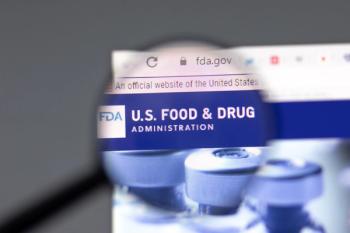
- Applied Clinical Trials-01-01-2005
Drug Safety, Access Top Policy Issues for 2005
Inadequate pre-approval testing and information disclosure may slow new drug development and change regulations.
Inadequate pre-approval testing and information disclosure may slow new drug development and change regulations.
The re-election of George W. Bush as president and continued Republican control of Congress reduce chances for any major expansion in health care coverage for the uninsured, or for Medicaid reform. Instead, the administration will champion social security and tax reform, which may include additional tax incentives for individuals and small businesses to obtain health coverage and establish health savings accounts.
Of particular importance to pharmaceutical companies is how the Bush administration finalizes the massive regulations and policies needed to establish the new Medicare pharmacy benefit. Direct government involvement in drug price negotiations is off the table, but rising health care costs and prices will draw intense scrutiny from both Republicans and Democrats anxious to restrain health care spending at a time of record budget deficits. To retain all the new benefits for seniors, including prescription drug coverage, policymakers will take a hard look at drug costs, utilization, and marketing and support efforts by Medicare drug plans to establish formularies, negotiate discounts, and support more treatment outcomes analysis. The key issue for pharma is whether the program boosts prescription drug use by seniors sufficiently to offset downward pressures on drug prices.
Spotlight on safety
The greatly expanded federal government involvement in paying for prescription drugs promises to heighten concerns in Washington about the Food and Drug Administration allowing unsafe drugs on the market. This is prompting a re-examination of new drug approval criteria and FDA oversight of marketed products. Initial revelations about antidepressants causing suicidality in children and patients using Merck's Vioxx suffering heart attacks have expanded to include a much broader range of therapies. The debate escalated markedly at a November Senate hearing when FDA safety officer David Graham cited serious safety issues with Astra-Zeneca's cholesterol agent Crestor, GlaxoSmithKline's asthma therapy Serevent, Pfizer's COX-2 inhibitor Bextra, Abbott's weight loss drug Meridia, and Roche's acne treatment Accutane. At the same time, FDA stiffened warnings about pregnant women taking Accutane and on proper use of the abortefacient Mifeprex (mifepristone or RU-486).
FDA officials insist that the Vioxx withdrawal and label changes demonstrate that the agency's drug safety system is working well. They maintain that approved drugs have benefits that outweigh risks and oppose proposals to establish an independent drug safety office. Nevertheless, some Congressional leaders and scientists have pointed to a too-cozy relationship between FDA and sponsors, and are investigating whether any parties tried to hide damaging information or mislead the public. Some experts are calling for re-reviews of approved drugs to ensure completion of Phase IV studies and to examine emerging safety signals.
FDA has commissioned an Institute of Medicine study on the effectiveness of its postmarket review system, which will address the impact of establishing a separate drug safety office and the need for additional FDA authority to limit the use of unsafe products. FDA also has promised to publish final versions of three risk management guidances that were issued in May of 2004 and to hold more workshops and advisory committee meetings to discuss complex drug safety issues. But critics consider these steps inadequate to restore public confidence in the agency's ability to obtain full information on drug safety issues and to monitor appropriate drug use and prescribing after new therapies reach the market.
Improving information
Concerns about drug safety promise to intensify efforts to expand public access to information about ongoing clinical trials and to full results of clinical studies. Sponsors have established a Web site to list study data voluntarily, but legislative proposals seek to mandate broader disclosure of both negative and positive research outcomes. In a related move, the National Institutes of Health (NIH) is finalizing an initiative to allow public access to the results of all NIH-funded research. Medical research societies with journals are questioning the cost of an NIH electronic publishing system and the timeframe for posting research results, as the debate accelerates on these issues.
On another front, FDA officials have promised to issue a major final rule revising labeling for drugs. This long-awaited policy adds a "highlights" section and reorganizes label information to help patients and physicians find key safety and prescribing information quickly. These changes support FDA electronic labeling initiatives and should facilitate government-wide efforts to provide medical information electronically as part of national e-prescribing and e-medical record systems. FDA also expects that these programs will encourage sponsors to submit clinical data and applications electronically to streamline review and approval processes.
Spurring innovation
FDA efforts to lay out pathways to speed more new drugs to market would have been at the top of the 2005 priority list a few weeks ago; now all the turmoil about unsafe therapies is raising fears of tighter drug approval policies and curbs on R&D at companies embroiled in legal and regulatory battles. Despite this, FDA acting deputy commissioner Janet Woodcock will continue efforts to turn the March 2004 Critical Path report into new models for drug research and development. The agency has prepared an "opportunities list" of priority research activities that it believes will spur R&D and is seeking support from industry and academia in pursuing them. Key objectives are to develop new biomarkers and enriched study designs to streamline the costly clinical trial process. FDA also hopes to launch initiatives to develop research standards, test protocols, and more efficient data collection systems.
Multiple challenges
In addition to drug safety and development, regulators and researchers will face a broad range of health care issues in coming months:
Vaccine shortages. The surprise shutdown of Chiron's Liverpool (UK) flu vaccine manufacturing facility in October and the resulting shortage of flu vaccine for this winter continues to focus public attention on vaccine research and regulation. Members of Congress are blaming FDA for failing to enforce manufacturing standards or recognize the severity of the problems at Chiron's plant. The situation is raising questions about the adequacy of FDA's foreign inspection program for manufacturers and of its enforcement approach.
If Chiron is unable to correct its manufacturing problems and regain its license by January 2005, policymakers are likely to call for measures that will encourage manufacturers to enter the U.S. flu vaccine market. The list includes more support for research on new manufacturing methods; tax incentives for new plant construction; universal flu vaccination policy to broaden the market; government guarantees to buy back unused doses; and legislation to reduce the threat of liability charges against vaccine and drug manufacturers.
Drug importing. Even though Democrats failed to parlay support for increased purchase of drugs from Canada and other western nations into victory, the drug import campaign won't die down. For both political and fiscal reasons, the White House will be looking for ways to identify "safe" foreign sources of less costly medicines. Several new Republican senators championed broader drug importing as one way to expand access to affordable medicines and they will be seeking to fulfill their promises.
Push for generics. The Bush administration has supported generic drug development and marketing as a way to reduce drug costs for patients and payers without direct price controls. Now the debate is escalating over policies that could facilitate production of generic versions of biotech therapies. FDA held a public meeting on "follow-on proteins" in September and is co-sponsoring a workshop in February on the scientific issues surrounding this topic. Brand-name manufacturers maintain that full preclinical and clinical testing is needed to ensure that a follow-on protein is the same as an innovator biotech therapy. Generic firms counter that advanced analytical and manufacturing systems permit the development of similar biopharmaceuticals with an abbreviated testing process. FDA is examining whether its current regulatory approach can be extended to this area, but new legislation probably will be needed to clarify FDA's authority to approve generic versions of biotech drugs.
Going global. The flu vaccine shortage and the continuing debate over drug importing testify to the increasingly international nature of pharmaceutical research and product development. The Bush administration is under pressure to boost support for international efforts to combat the AIDS epidemic in third world nations, and cloning and stem cell research are drawing international scrutiny. A host of ethical and regulatory issues are emerging from the shift of more clinical trials to newly industrialized and developing nations where costs are lower and participants more available. These developments are challenging intellectual property protections for drugs and raising questions about third world access to needed therapies.
FDA will continue efforts to harmonize new drug development and regulatory oversight by different nations. This year's focus will be setting global quality manufacturing standards. All these activities are slated to further focus attention on global price differentials for drugs, and on whether the U.S. market should underwrite biomedical research for the rest of the world.
New offices, new names. FDA faces new leadership, as well as a new home when it relocates most drug reviewers and chemists to its new White Oak campus. The move will provide an opportunity to reorganize the Center for Drug Evaluation and Research's Office of New Drugs and Office of Pharmaceutical Science, which is expected to alter how CDER reviews applications and collects information.
An early task for the new HHS secretary (see story on page 21) will be to name a permanent head of FDA, which has been led by an acting commissioner for much of the Bush administration. Leadership shifts at key House and Senate committees also will affect their approaches to dealing with issues affecting pharmaceutical companies and the nation's health care system.
Sidebar: Tommy Thompson Out and Michael Leavitt in at HHS
HHS secretary Tommy Thompson is leaving Washington to return to the private sector. President George W. Bush named former Utah Governor Michael Leavitt as the next head of the Department of Health and Human Services. In announcing his resignation, Thompson said that he is most proud of his role in overhauling Medicare, in making Americans more aware of health issues, in rebuilding the federal and state public health infrastructure, and in expanding involvement in the fight against AIDS.
In an open exchange with reporters, Thompson stated that he is particularly worried about the nation's ability to protect against tampering of the food supply and to counter a pandemic flu outbreak. The secretary defended the administration's embryo stem cell research policy, insisting that stem cell research is limited more by a lack of trained researchers than by limits on federal funding. And he said that Congress should have provided HHS with authority to negotiate prices for the Medicare drug benefit.
Bush previously appointed Leavitt a year ago to head the Environmental Protection Agency, where Leavitt was embroiled in clean air issues that required his talent as an administrator and consensus-builder.
Leavitt faces some very difficult situations at HHS. A key challenge will be to manage HHS's vast range of public health and welfare programs during a period of shrinking resources. Bush wants to halve the federal deficit over five years, which puts spending for Medicare, Medicaid, and other health problems squarely on the chopping block. The big increases previously available to expand the National Institutes of Health already have disappeared. FDA is scrambling for resources to perform its mandated functions and will be hard-pressed to find any new money in its current budget.--Jill Wechsler
Articles in this issue
almost 21 years ago
Pediatric Drug Developmentalmost 21 years ago
The Abuse of Man: An Illustrated History of Dubious Medical Experimentationalmost 21 years ago
Paying the Price of Being an Orphanalmost 21 years ago
Pediatric Research: Filling the Gapsalmost 21 years ago
Pediatric Trials: The Impact of U.S. Legislative and Regulatory Effortsalmost 21 years ago
'Community' Input into the Consent Processalmost 21 years ago
eShowcaseNewsletter
Stay current in clinical research with Applied Clinical Trials, providing expert insights, regulatory updates, and practical strategies for successful clinical trial design and execution.






.png)



.png)



.png)
.png)
